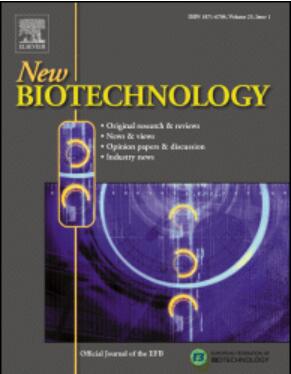Enzyme-assisted extraction and product profiling of fucosylated xyloglucan from industrial citrus pectin residues
IF 4.5
2区 生物学
Q1 BIOCHEMICAL RESEARCH METHODS
引用次数: 0
Abstract
Industrial pectin production from citrus peels involves extended, multi-step acidic extraction at elevated temperatures. Pectin quality can be improved by reducing the extraction time or number of steps, but this comes at the expense of yield. A decrease in pectin yield revenue may be compensated for by developing new usage of the partially depectinized citrus residues. One option is to capitalize on the fucosylated xyloglucans present in the residues. Thus, the aim of this work was to maximize gentle extraction of fucosylated xyloglucan from partially depectinized citrus peel residues of orange and lemon and examine the effects of multi-step extraction on pectin quality. To maintain the structural integrity of the xyloglucan, an enzyme-assisted approach was used to release the xyloglucan from the fibrous pectin extraction residues, with a focus on enzymatic cellulose degradation. The performance of four commercial cellulase preparations were compared (Cellic CTec2, Cellic CTec3, ENZECO CE3, and ENZECO Glucanase PF) through a multivariate approach. All cellulase preparations, being multicomponent enzyme blends, induced partial degradation of xyloglucan simultaneously with the cellulose depolymerization; the lowest dosage of Cellic CTec2 (100 µL/g DM, 40 °C, pH 7.0) resulted in the highest yields of solubilized fucosylated xyloglucans of 53 % and 39 % from the depectinized lemon and orange residues, respectively. Following the enzymatic extraction, membrane filtration outperformed alcohol precipitation in separating the solubilized xyloglucan oligosaccharides (< 2 kDa) from the simultaneously released high molecular weight rhamnogalacturonan I-like structures (500–10 kDa). The data provide new options for improved valorization of industrial depectinized citrus residues.
求助全文
约1分钟内获得全文
求助全文
来源期刊

New biotechnology
生物-生化研究方法
CiteScore
11.40
自引率
1.90%
发文量
77
审稿时长
1 months
期刊介绍:
New Biotechnology is the official journal of the European Federation of Biotechnology (EFB) and is published bimonthly. It covers both the science of biotechnology and its surrounding political, business and financial milieu. The journal publishes peer-reviewed basic research papers, authoritative reviews, feature articles and opinions in all areas of biotechnology. It reflects the full diversity of current biotechnology science, particularly those advances in research and practice that open opportunities for exploitation of knowledge, commercially or otherwise, together with news, discussion and comment on broader issues of general interest and concern. The outlook is fully international.
The scope of the journal includes the research, industrial and commercial aspects of biotechnology, in areas such as: Healthcare and Pharmaceuticals; Food and Agriculture; Biofuels; Genetic Engineering and Molecular Biology; Genomics and Synthetic Biology; Nanotechnology; Environment and Biodiversity; Biocatalysis; Bioremediation; Process engineering.
 求助内容:
求助内容: 应助结果提醒方式:
应助结果提醒方式:


